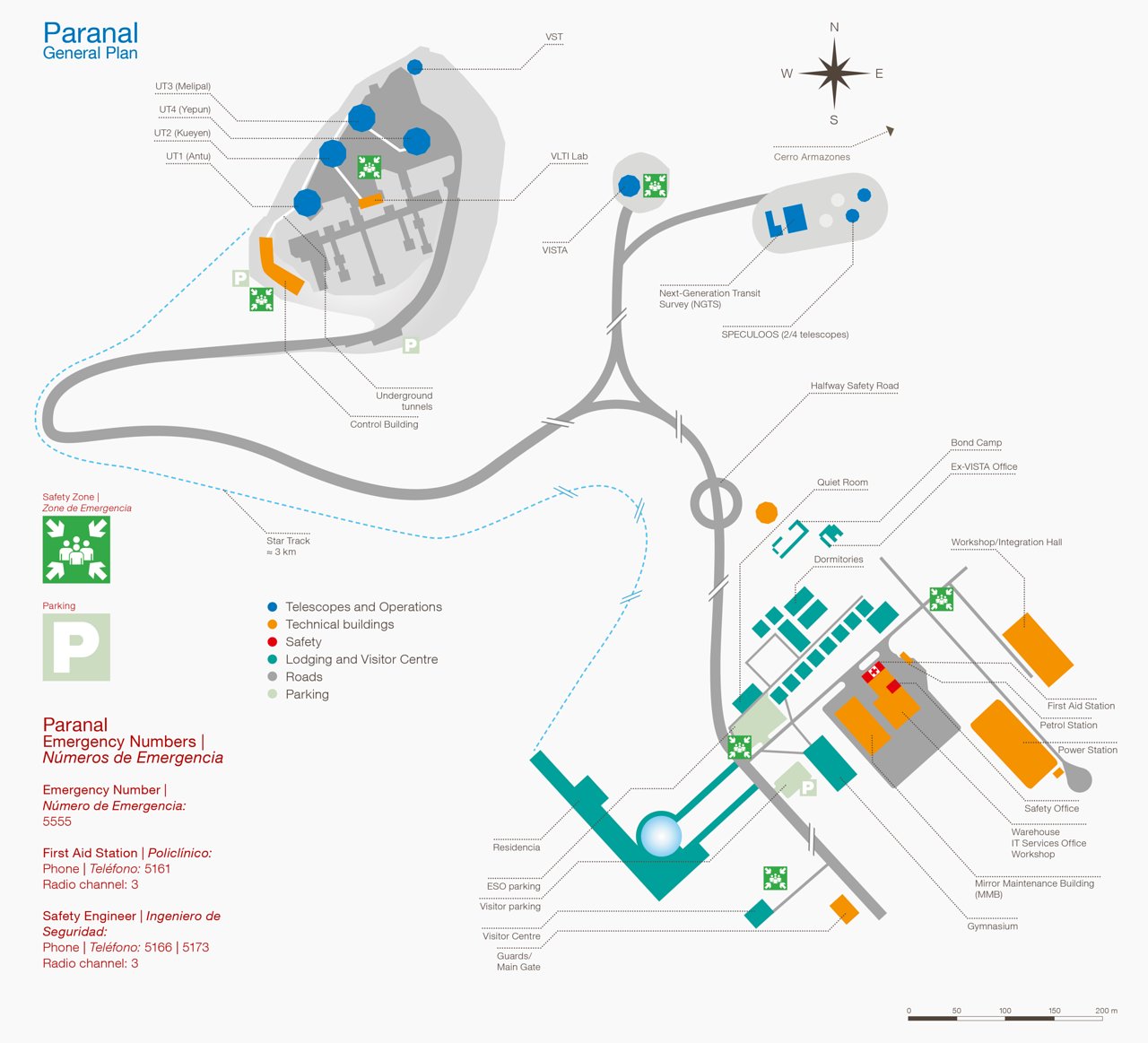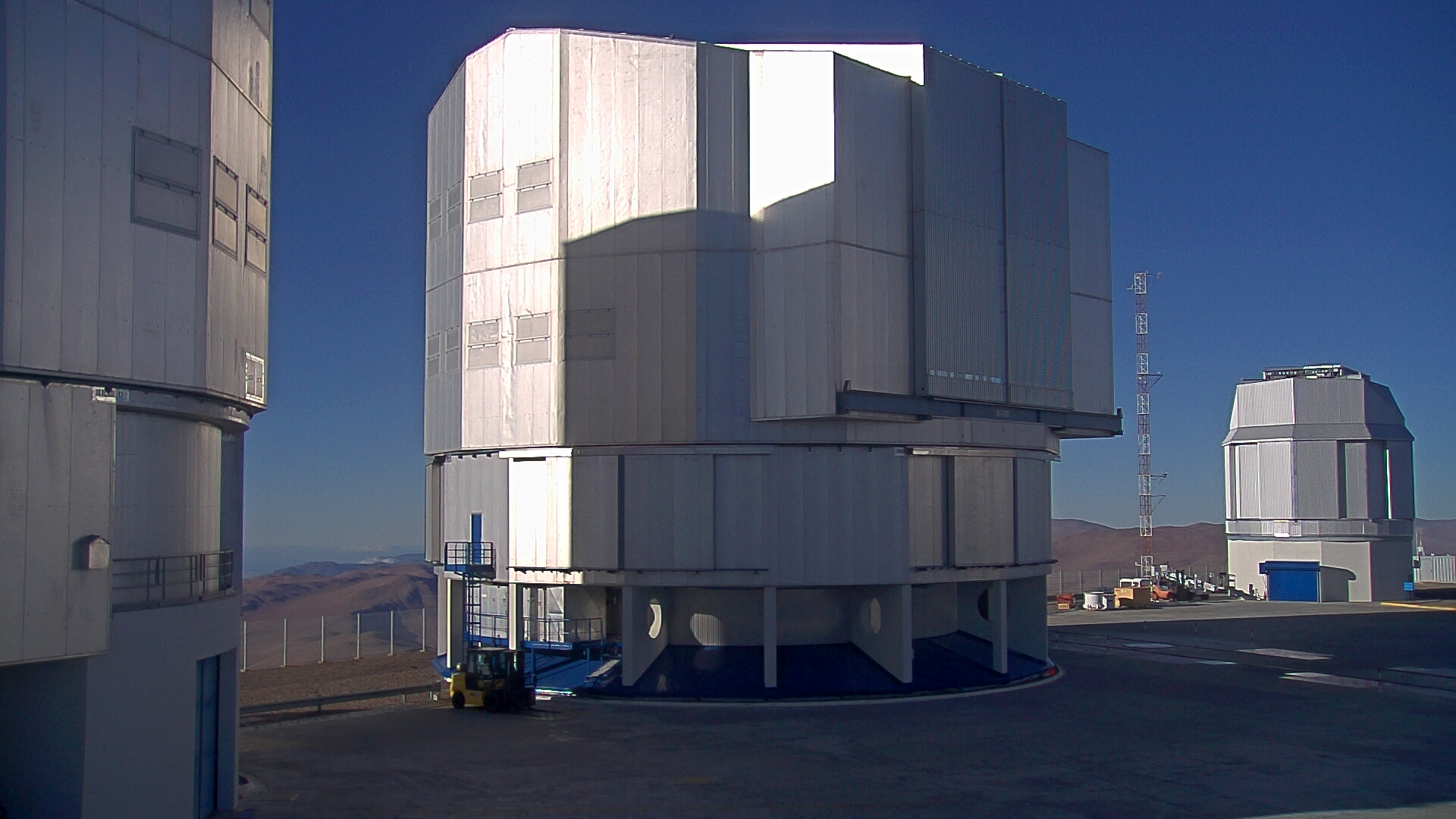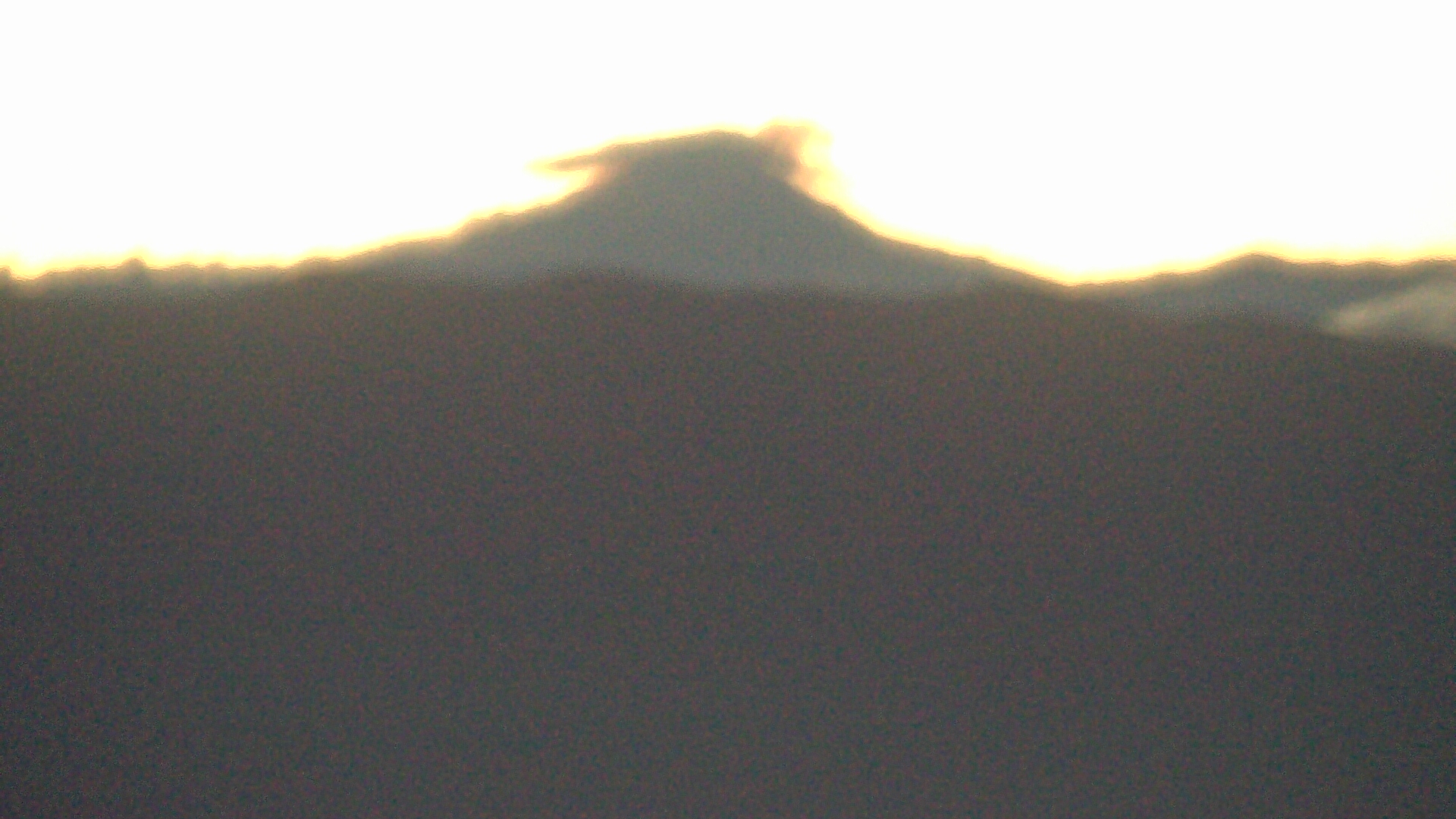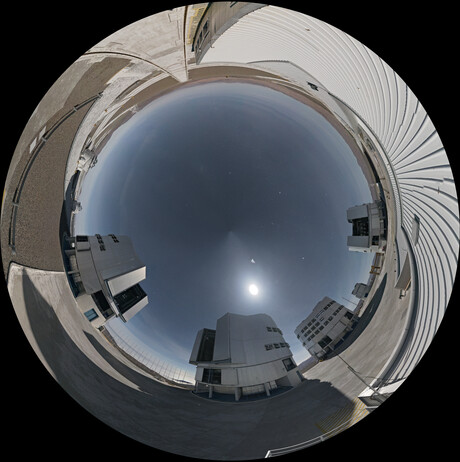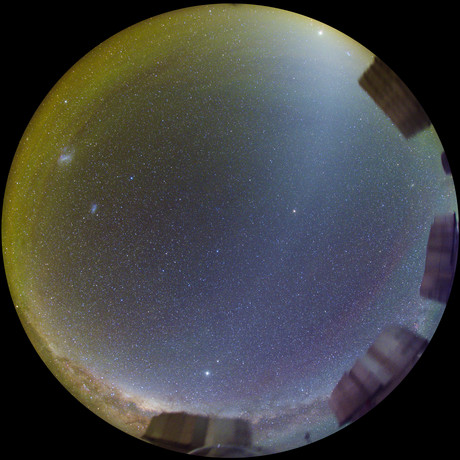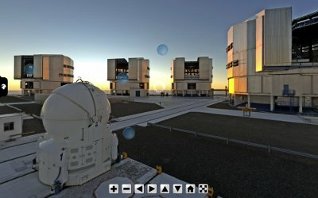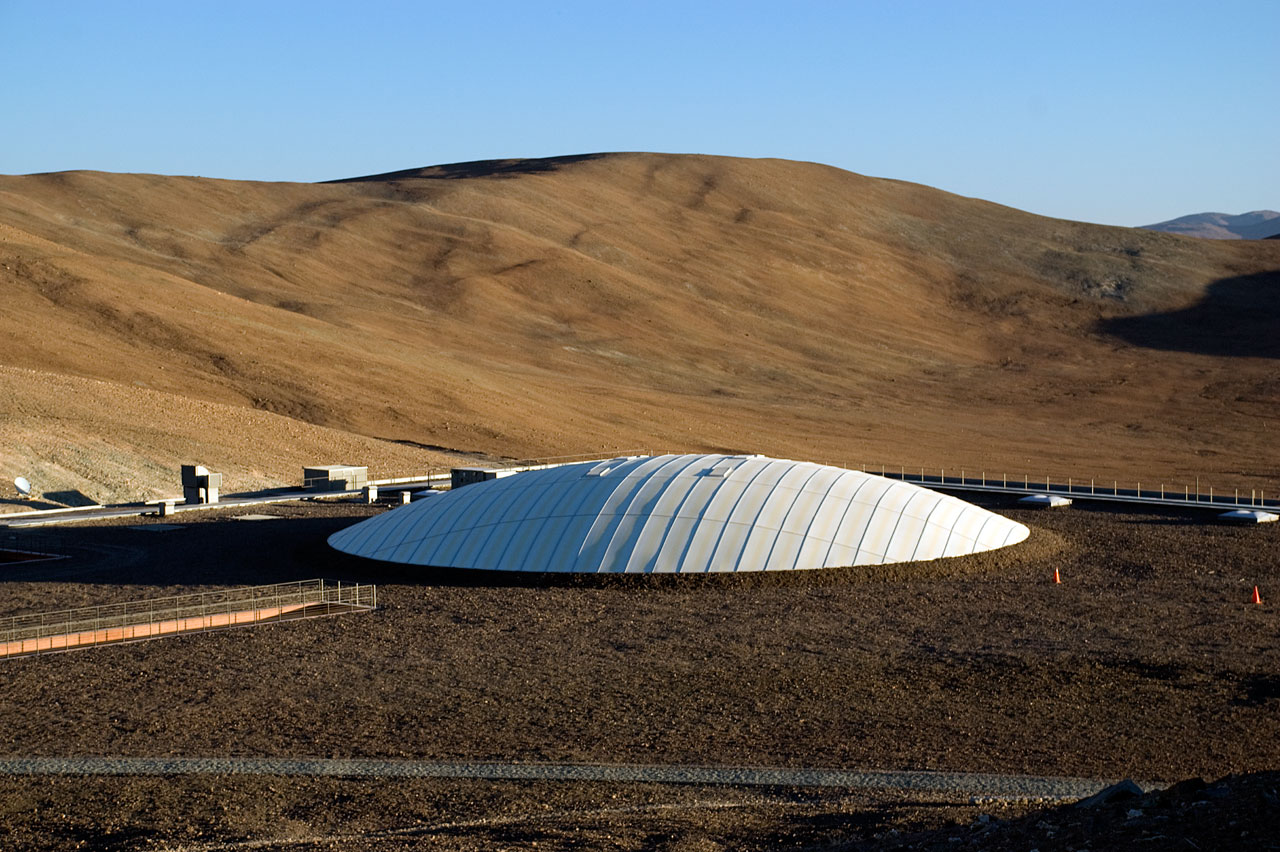Very Large Telescope
The world's most advanced visible-light astronomical observatory
Latest available panoramic image of Paranal ()
Please note that the webcams are currently under maintenance and will be fully operational as soon as possible.
ESO's Very Large Telescope (VLT) is a flagship facility for European ground-based astronomy. It is one of the world's most advanced optical telescopes, consisting of four Unit Telescopes with main mirrors of 8.2m diameter and four movable 1.8m diameter Auxiliary Telescopes. The telescopes can work together, to form a giant ‘interferometer’, the ESO Very Large Telescope Interferometer, allowing astronomers to pick up much finer details of the cosmos than would be possible with the ATs or the UTs alone.
The 8.2m diameter Unit Telescopes can also be used individually. With one such telescope, images of celestial objects as faint as magnitude 30 can be obtained in a one-hour exposure. This corresponds to seeing objects that are four billion (four thousand million) times fainter than what can be seen with the unaided eye.
The large telescopes are named Antu, Kueyen, Melipal and Yepun.
Webcam
Latest available image of MELIPAL, also known as UT3 ()
On extremely clear days the magnificent 6739-metre volcano Llullaillaco is visible in the background of this photograph. It is an amazing 190 kilometres away on the border with Argentina. ()
A Tour at Paranal Observatory
|
Click on the image to take a Virtual Tour in and nearby the VLT. |
Visit Paranal Observatory
- Journalists, science writers and producers, please see Media Visits
- Tourist, students and lay people, please see Tourists and Students Visits
Telescopes and Instruments
The VLT instrumentation programme is the most ambitious programme ever conceived for a single observatory. It includes large-field imagers, adaptive optics corrected cameras and spectrographs, as well as high-resolution and multi-object spectrographs and covers a broad spectral region, from deep ultraviolet (300 nm) to mid-infrared (24 µm) wavelengths.
The Unit Telescopes
The 8.2m diameter telescopes are housed in compact, thermally controlled buildings, which rotate synchronously with the telescopes. This design minimises any adverse effects on the observing conditions, for instance from air turbulence in the telescope tube, which might otherwise occur due to variations in the temperature and wind flow. The first of the Unit Telescopes, 'Antu', went into routine scientific operations on 1 April 1999. Today, all four Unit Telescopes and all four Auxiliary Telescopes are operational.
VLT Unit Telescope enclosures:
- Height: 2850 cm
- Diameter: 2900 cm
The Auxiliary Telescopes
Although the four 8.2-metre Unit Telescopes can be combined in the VLTI, they are mostly used for individual observations and are only available for interferometric observations for a limited number of nights every year. But four smaller, dedicated 1.8-metre Auxiliary Telescopes (ATs) are available to allow the VLTI to operate every night.
More information is available on this link
Science with the Very Large Telescope
 The VLT has made an undisputed impact on observational astronomy. It is the most productive individual ground-based facility, and results from the VLT have led to the publication of an average of more than one peer-reviewed scientific paper per day. VLT contributes greatly to making ESO the most productive ground-based observatory in the world. The VLT has stimulated a new age of discoveries, with several notable scientific firsts, including the first image of an extrasolar planet (eso0428), tracking individual stars moving around the supermassive black hole at the centre of the Milky Way (eso0846), and observing the afterglow of the furthest known Gamma-Ray Burst.
The VLT has made an undisputed impact on observational astronomy. It is the most productive individual ground-based facility, and results from the VLT have led to the publication of an average of more than one peer-reviewed scientific paper per day. VLT contributes greatly to making ESO the most productive ground-based observatory in the world. The VLT has stimulated a new age of discoveries, with several notable scientific firsts, including the first image of an extrasolar planet (eso0428), tracking individual stars moving around the supermassive black hole at the centre of the Milky Way (eso0846), and observing the afterglow of the furthest known Gamma-Ray Burst.
More about Science with the VLT
- Science with ESO Telescopes
- ESO Top 10 Astronomical Discoveries, n° 1, 3, 5, 6, 7, 8 (also available as presentation)
More about the Very Large Telescope
- More interesting facts are available on the FAQs page
- More images and videos are available in the ESO multimedia archive
- Read more on about this telescope on the VLT Handout in PDF format
- For Scientists: for more detailed information, please see our technical pages
- More detailed background and technical information is provided in the VLT Whitebook
Residencia
The VLT hotel, the Residencia, is an award-winning building, and served as a backdrop for part of the James Bond movie Quantum of Solace.
The VLT Trailer
Download the VLT trailer in the video archive.
VLT
|
The VLT on Google map
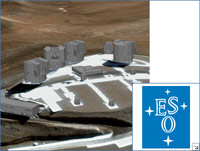
Download the 3D models of the telescopes and see them in Google earth (kmz file, 4.8MB)
